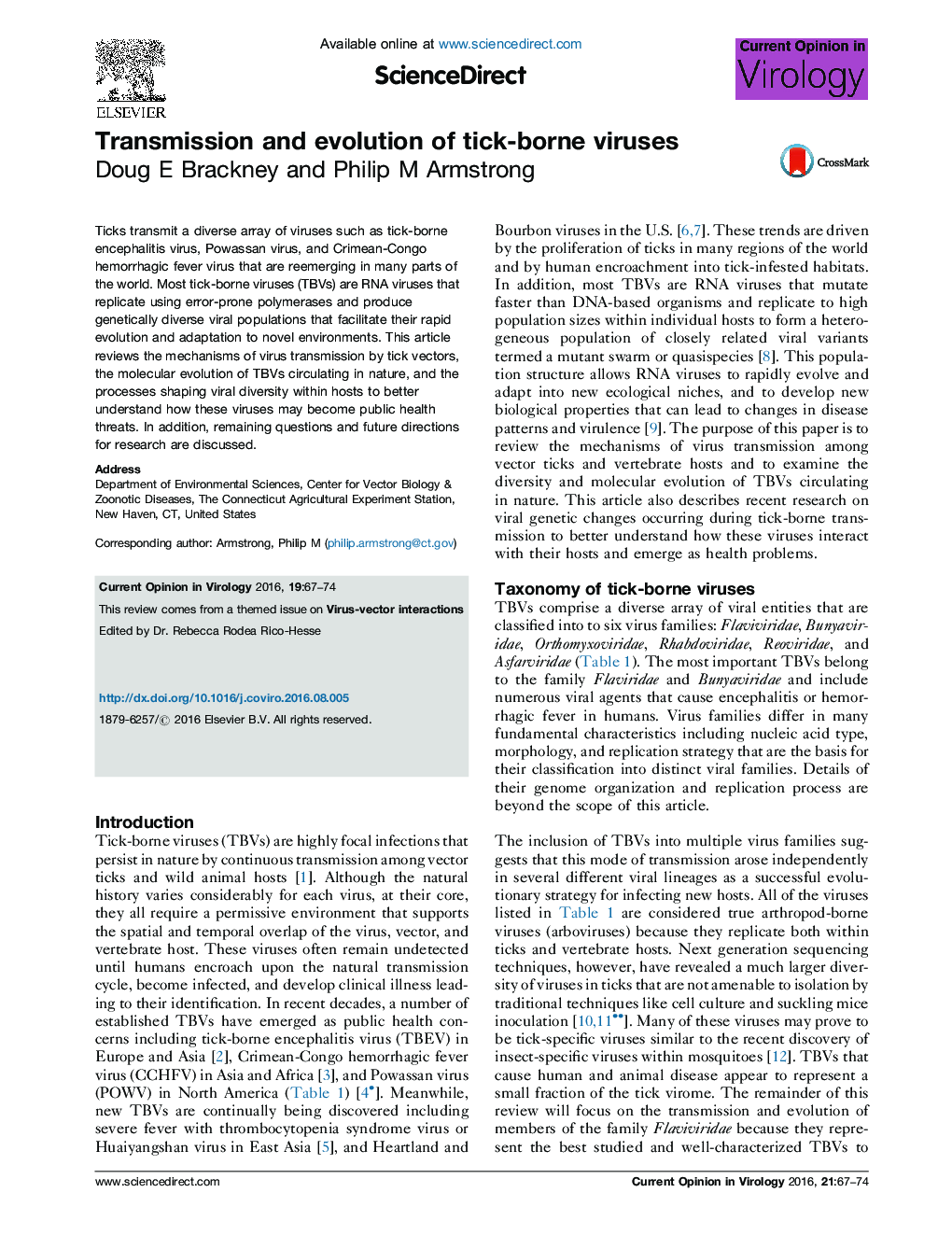| Article ID | Journal | Published Year | Pages | File Type |
|---|---|---|---|---|
| 2473147 | Current Opinion in Virology | 2016 | 8 Pages |
•Tick-borne viruses are classified into six virus families, including Flaviviridae.•The mechanisms of virus transmission by ticks are reviewed.•Tick-borne flaviviruses comprise geographically and ecologically distinct lineages.•Virus diversity is shaped by RNA inference and transmission bottlenecks.
Ticks transmit a diverse array of viruses such as tick-borne encephalitis virus, Powassan virus, and Crimean-Congo hemorrhagic fever virus that are reemerging in many parts of the world. Most tick-borne viruses (TBVs) are RNA viruses that replicate using error-prone polymerases and produce genetically diverse viral populations that facilitate their rapid evolution and adaptation to novel environments. This article reviews the mechanisms of virus transmission by tick vectors, the molecular evolution of TBVs circulating in nature, and the processes shaping viral diversity within hosts to better understand how these viruses may become public health threats. In addition, remaining questions and future directions for research are discussed.
